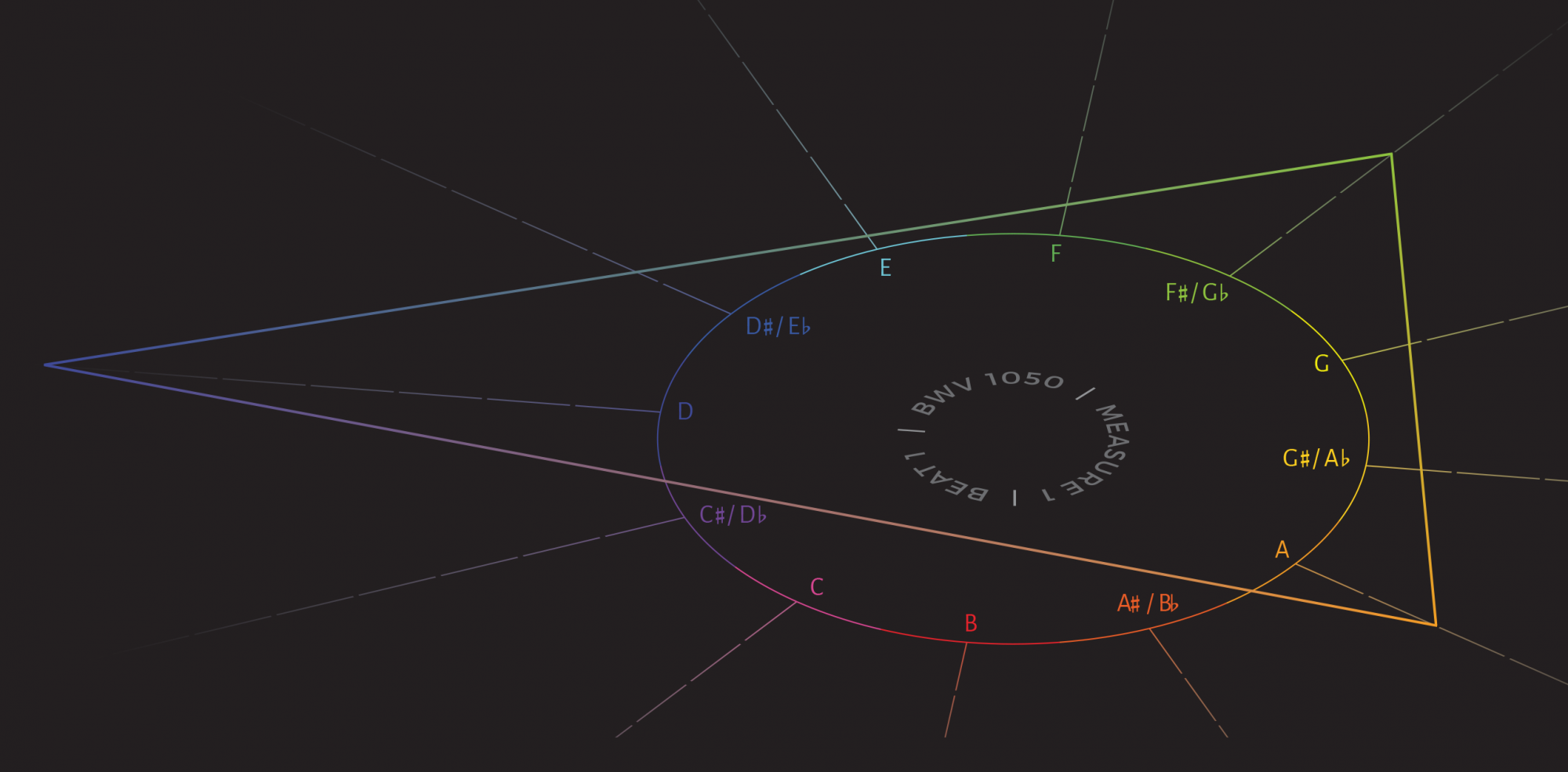Michael Boyd
Abstract
Iannis Xenakis’s Charisma (1971) is a striking, concise duo for clarinet and cello that employs timbre and dynamic oppositions as primary structural elements. This composition is more minimal in terms of the total number of performed notes than much of Xenakis’s instrumental music and presents different challenges to analysis than studies of his stochastic and algorithmic music. This article examines how sonic oppositions – specifically harmonic versus noisy timbres and constant versus contoured dynamic envelopes – are established, maintained, and intermixed in the composition. Over the course of the piece, contrasting dynamic shapes alternate while oppositional timbres, initially heard in isolation, gradually merge and gravitate toward noise.
View PDF
Return to Volume 36
Keywords and Phrases: Oppositions; timbre; dynamic envelope; noise
Introduction
Iannis Xenakis’s Charisma (1971) is a striking, concise duo for clarinet and cello that employs timbre and dynamic oppositions as primary structural elements. This composition, approximately four minutes in duration, features a limited number of events that are most often “long-held sonorities, usually intensified by timbral extensions, dynamic contours, or extreme registral placement” (Harley 2004, 75).1 Charisma is thus more minimal in terms of the total number of performed notes than much of Xenakis’s instrumental music and presents different challenges to analysis than studies of his stochastic and algorithmic compositions, which generally consider compositional process and mathematical models for managing large quantities of musical events.2 It does, however, relate to other familiar aspects of the composer’s work, namely his spatial approach to time and use of a full range of dynamics and timbres, often placed in striking oppositions. There are fewer analytic studies that focus on this facet of Xenakis’s music, perhaps because it is most closely associated with his electroacoustic output, though DeLio (2002) and Levy (2012) represent notable examples of such efforts.3 DeLio (2002) analyzes timbral and frequency region oppositions in Diamorphoses (1957, electro-acoustic sound), finding that contrasting elements are introduced, separated, and eventually synthesized over the course of the composition. Levy (2012) investigates the instantiation of shapes that “Xenakis describes and returns to repeatedly…clouds and branching structures, which he calls arborescences,” in Mycenae Alpha (1978, electro-acoustic sound) and Polytope de Mycènes (1978, multimedia event) (173). In his analysis of Mycenae Alpha, Levy associates the piece’s discrete formal sections primarily with clouds and its linear material largely with arborescences, though noting that there are linear aspects to the work’s form and non-linear moments in its material. Charisma itself has not yet been the subject of a detailed analysis. Harley (2004) describes its general features and situates it within Xenakis’s output, and Freedman (2010) examines the piece’s performance practice challenges. The analysis of Charisma that follows examines how sonic oppositions – specifically of timbre (harmonic vs. noisy) and dynamic shape (constant vs. contoured) – are established, maintained, and intermixed in the composition.4 Over the course of the piece, contrasting dynamic shapes alternate while oppositional timbres, initially heard in isolation, gradually merge and gravitate toward noise. Thus the ending of the composition, which is entirely noisy, exists in timbral opposition to the harmonic sounds that are heard throughout much of the work.
Two basic dynamic envelopes – the “description of [a sound’s] amplitude characteristics with respect to time” – are used in Charisma (Schrader 1982, 24). The first is a constant dynamic, typically loud, that features a quick attack and decay, while the second is a contoured, crescendo-decrescendo shape.5 Timbre is somewhat more varied, though also organized around oppositions: harmonic and noisy sounds. Harmonic timbres come from one or both of the performers playing in a traditional manner. Noisy sounds, conversely, result from diverse performance modes that create a spectrum of timbres ranging from semi-pitched inharmonic sounds to nearly pure noise that eschews any perceptible harmonic components. In this analysis I use the term “noisy” as a timbral category that includes this spectrum of non-harmonic sounds and “noise” to describe sounds that approximate white or other colored noise. Each instrumentalist has a single gesture in the piece that approximates pure noise: bow grinding (overpressure) near the bridge of the cello and harmonic zone multiphonics on the clarinet.6 Semi-pitched inharmonic sounds largely result from the use of quarter step intervals that are paired with additional noisy elements such as bow tremolo, hard attacks, and loud dynamics.
Example 1 (see Appendix) reproduces the score for Charisma (Xenakis 1971). Pitches are notated as they sound, and an approximate duration in seconds is provided for most gestures. I hear the composition dividing into ten events, which are annotated in this score with the letters A through J. My segmentation of the piece into individual events is guided by the work’s aforementioned sonic oppositions.7 Event boundaries are strongly suggested to me by the alternation between contrasting dynamic shapes. Each of the ten events I have identified features a different dynamic envelope than the material that immediately precedes and follows it. Many, but not all, of these boundaries are also marked by timbral contrasts. Cross-event similarities, in particular between Events A/G, B/F, and D/H, reinforce this segmentation.
I understand the larger form of Charisma to be composed of three sections: 1 – Events A through D (first page of the score); 2 – Events E through G (first three systems of page two); and 3 – Events I and J (final two systems of page two). The first two sections are approximately the same duration (87” and 88” respectively), while the final section is a bit shorter (68”). My perception of this sectional structure is predominantly driven by the striking nature of Events E and I. Both events feel like unique moments in Charisma that initiate something new: Event E features the highest density of onsets within the piece and is the most traditionally rhythmic event, while Event I draws together the two instrumentalists’ noisiest gestures (bow grinding and harmonic zone multiphonics). As the analysis proceeds, I will outline additional distinctions between the three sections that further support this larger-scale segmentation.
1. Analysis of Section 1
Section 1 introduces the basic structural elements that populate Charisma: oppositional timbres and dynamic envelopes.8 Noisy sounds are heard first in Events A and B, followed by harmonic timbres in Events C and D. Event A calls for the cellist to grind their bow at the bridge, resulting in a sound that approximates white noise. Event B, though not approaching pure noise as closely as Event A, features a clearly noisy character due to the use of loud bow tremolo. Conversely, Events C and D present pitched, harmonic sounds. Event C is composed of single pitches played by the clarinetist. In the next event, a cello trill leads to an interval class 3 dyad, followed by a unison G \frac{3}{4}\sharp
Over the course of Section 1, Xenakis works through every combination of the piece’s two oppositions, as depicted in Figure 1. The alternation between dynamic oppositions remains consistent throughout Section 1 and the rest of the piece, with the aforementioned exception of the final two seconds of Event C. Notably, though, timbral opposition is sometimes strict and sometimes subject to a degree of variation. For example, Events A and B, both strongly in the noisy category, collectively progress from essentially pure noise to a semi-noisy, inharmonic timbre with some perceptible pitched aspects. Similarly, the final gesture of Event D, the G \frac{3}{4}\sharp
2. Analysis of Section 2
Section 2, while continuing to alternate between constant and contoured dynamic envelopes, contains greater timbral variability than Section 1. This section begins with an event that integrates harmonic sounds into a generally noisy texture, followed by contoured events that each move toward purer representations of their respective timbral categories and reinforce the notion of discrete oppositions. As mentioned previously, Event E, which features a constant dynamic shape, is one of the most active and traditionally rhythmic moments in Charisma. As such, this moment significantly contrasts the piece’s previous material and thus suggests the start of a new section to me. In this event, the duo plays a series of notes in the same register, with the clarinetist performing large-interval grace notes and the cellist playing harmonic downward glissandi.10 This event is broadly noisy, due primarily to the clarinetist’s quick succession of loud, hard attacks. The cellist’s continuous glissandi add to the noisy character of the event by obscuring any specific pitch center and creating microtonal, constantly changing relationships with the clarinet tones. Despite the general timbral character of Event E, there are a few hints of pitched, harmonic material. The first two notes played by the clarinetist echo that performer’s first tones of Event C, a memorable moment that presented clearly pitched material in the previous section. Additionally, the duo sounds a fleeting unison (A \frac{1}{4}\sharp
Event F consists of a pair of dynamically contoured gestures, a configuration shared with Events D and H. Overall this event also falls in the noisy category, though the two gestures are not equally so. The first half of Event F has a strong inharmonic character due to the quarter tone intervals between the instrumentalists, while the second half becomes much closer to pure noise when the clarinetist introduces a harmonic zone split tone multiphonic. Both gestures are noisiest at their dynamic peak, and the event becomes noisier overall as it unfolds. Event G is a brief recall of the cellist’s bridge noise that opens Charisma. This event, like Event A, features both a noisy timbre and constant dynamic envelope. Event H, as mentioned previously, is made up of two contoured dynamic gestures. In a manner similar to the start of Event F, it begins with a cello double stop that sounds a quarter tone interval at its dynamic peak. However, the following gesture is a unison that sits firmly in the harmonic timbral category (notably, the second half of Events F and H both center on the pitch-class D\sharp
3. Analysis of Section 3
Event I features a constant dynamic shape and is the noisiest event in Charisma, which, for me, makes it the most memorable moment in the composition and signals the start of the piece’s final section. Here the clarinetist returns to harmonic zone split tone multiphonics that were introduced in Event F and represent that performer’s noisiest gesture. The cellist alternates between bridge noise, heard previously in Events A and G, and glissandi that span more than four octaves (from E6 to C2), recalling Event E. During this event’s five instances of bridge grinding, the two performers realize the most extreme moments of collaborative noise in the composition. The six glissandi of Event I provide moments of textural clarification and the suggestion of harmonic material.
Event J starts with a long glissando from A6 to C2 that subsequently continues down an additional octave plus a quarter step through the detuning of the cello’s lowest string.11 The gesture overall features a contoured dynamic, with the peak occurring after the extremely low B \frac{3}{4}\sharp
Conclusion
Charisma ultimately gravitates toward noise as it unfolds, though it does so gradually across the three sections. Section 1 lays out and permutes the work’s essential oppositions: noisy vs. harmonic timbres and constant vs. contoured dynamic envelopes. Over the course of this section, all four possible combinations of timbre and dynamic shapes are heard. Here, the events with constant dynamic envelopes (A and C) represent their timbral category in a relatively pure way, just noisy or harmonic sounds with no mixture, while those that have contoured dynamics (B and D) subtly hint at their timbral opposite.
Section 2 contains comparatively more noisy events than its predecessor, stemming in part from the elimination of the harmonic timbre/constant dynamic combination. This section contains two noisy events with constant dynamic shapes. The first (E) contains faint hints of harmonic material, while the second (G) is pure noise. Across these two events there is thus a move toward more definitive noise, albeit a trajectory that is partially muted by the brevity of Event G. Both events in Section 2 that feature contoured dynamic shapes move internally toward timbral extremes: Event F to greater noise and Event H toward a single discrete pitch. On the whole, Section 2 follows a course from noisy to harmonic material. This path mimics the broader structure of Section 1, which starts with noisy timbres and ends with harmonic sounds. Like that of Section 1, this trajectory contrasts the composition’s macro trajectory toward noise. Further, Section 2 begins with timbral blending in Event E, hints of harmonic sounds within a noisy texture, but subsequently reinforces discrete timbral oppositions in the events that follow.
Section 3 nearly liquidates harmonic material from the composition. Indeed, pitched sounds are only heard as glissandi embedded within noise. This last section presents an interesting approximate balance of elements: two events of more or less equal duration (3400) that contain five instances of bow grinding, seven glissandi, and seven “sons electroniques” (eight if one counts the longer instance of this gesture that immediately precedes these final sounds). Given that Section 3 is nearly all noise, the only true transition is from a longer, continuous event with multiple components to several shorter, individual gestures.
Figure 4 summarizes the composition’s form. Timbre is indicated with the letters N (noisy) and H (harmonic). Plus and minus signs are used occasionally to indicate transitions to timbres of greater or lesser purity (more or less harmonic/noisy) either across two adjacent events or within an event. Dynamic envelopes are depicted graphically; rectangles indicate constant dynamics while triangles correspond to contoured dynamics. Sections 1 and 2 both begin with noisy timbres and end with harmonic sounds, while Section 3 contains only noisy events. The two timbre types are distributed in a relatively equal manner in the first section. Noisy events become more prominent in Section 2, and even more so in Section 3 where harmonic sounds are entirely absent. Despite changes in timbre distribution across the three sections, constant and contoured dynamic envelopes are used in alternation throughout Charisma.
The embedding of descending glissandi within Event I might be understood as Xenakis’s response to the quote from Homer’s Iliad found at the top of the score: “then the soul like smoke moved into the earth, grinding.”12 The obvious reading of the quote’s relationship to this composition is that harmonic sounds represent the “soul” and noise symbolizes the “earth” and/or “grinding”; over the course of Charisma, harmonic sounds are gradually absorbed by noise, with literal grinding being employed at times by the cellist.13 The intermixing of harmonic and noisy sounds that ultimately leads to the subsuming of the former within the latter, is, to my ear, the primary process of this composition and is concisely synopsized in Event I. Cello glissandi mark significant moments in Charisma; they are heard throughout the events that begin Sections 2 and 3 (E and I) and initiate the composition’s final event (J). In this piece, I interpret glissandi as unique, integrative gestures that are simultaneously evocative of both harmonic sound and noise. At any particular moment I hear a glissando as clearly harmonic, though across a span of time I perceive it as a linear form of noise since, within its bounds, all frequencies sound in a continuous, equally distributed fashion. Interpreted in this light, glissandi demonstrate that the timbral contrast that is structurally important to this composition may in fact present ends of a spectrum rather than discrete opposites; noisy and harmonic sounds, though quite different, are ultimately connected to one another.
Appendix
References
Arsenault, Linda. 2000. “An Introduction to Iannis Xenakis’s Stochastic Music: Four Algorithmic Analyses.” PhD diss., University of Toronto.
⸻. 2002. “Iannis Xenakis’s Achorripsis: The Matrix Game.” Computer Music Journal 26(1): 58-72.
Cogan, Robert. 1984. New Images of Musical Sound. Cambridge, MA, Harvard University Press.
Damiens, Alain. 1990. Alain Damiens, clarinette: Xenakis, Haïm, Lenot, Fenelon, Globokar. ADDA MFA 581277. Compact disc.
DeLio, Thomas. 1980. “Iannis Xenakis’s Nomos Alpha: The Dialectics of Structure and Materials.” Journal of Music Theory 24(1): 63-95.
⸻. 2002. “Diamorphoses by Iannis Xenakis.” In Electroacoustic Music: Analytical Perspectives, edited by Thomas Licata, 41-57. Westport, CT: Greenwood Press.
Di Scipio, Agostino. 1998. “Compositional Models in Xenakis’s Electroacoustic Music.” Perspectives of New Music 36(2): 201-243.
Duinker, Ben. 2021. “Rebonds: Structural Affordances, Negotiation, and Creation.” Music Theory Online 27(4).
Freedman, Lori. 2010. “Potent.” In Performing Xenakis, translated and edited by Sharon Kanach, 3-10. Sheffield, MA: Pendragon Press.
Hanninen, Dora. 2001. “Orientations, Criteria, Segments: A General Theory of Segmentation for Music Analysis.” Journal of Music Theory 45(2): 345-433.
Harley, James. 2002. “The Electroacoustic Music of Iannis Xenakis.” Computer Music Journal 26(1): 33-57.
⸻. 2004. Xenakis: His Life in Music. New York: Routledge.
Hasegawa, Robert. 2012. “Coherence and Incoherence in Xenakis’ Embellie.” In Xenakis Matters: Contexts, Processes, Applications, edited by Sharon Kanach, 231-243. Sheffield, MA: Pendragon Press.
Levy, Benjamin. 2012. “Clouds and Arborescence in Mycenae Alpha and the Polytope de Mycènes.” In Xenakis Matters: Contexts, Processes, Applications, edited by Sharon Kanach, 173-184. Sheffield, MA: Pendragon Press.
Mâche, F.-B. 1993. “The Hellenism of Xenakis.” Contemporary Music Review 8(1): 197-211.
de Saram, Rohan. 2010. “Xenakis: an ancient Greek born in the 20th century.” In Performing Xenakis, translated and edited by Sharon Kanach, 297-302. Sheffield, MA: Pendragon Press.
Schrader, Barry. 1982. Introduction to Electro-Acoustic Music. Englewood Cliffs, NJ: Prentice-Hall.
Solomos, Makis. 2001. “The Unity of Xenakis’s Instrumental and Electroacoustic Music: The Case for ‘Brownian Movements.’” Perspectives of New Music 39(1): 244-254.
Squibbs, Ronald. 1996. “An Analytical Approach to the Music of Iannis Xenakis: Studies of Recent Works.” PhD diss., Yale University.
⸻. 2003. “Xenakis in Miniature: Style and Structure in à r. (Hommage à Ravel) for Piano (1987).” Perspectives of New Music 41(1): 120-153.
ST-X Ensemble Xenakis USA. 1997. Ianissimo! Xenakis Complete Vol. 2. Conducted by Charles Bornstein. Vandenburg VAN 0003. Compact disc.
Terrazas, Wilfrido. 2010. “Xenakis’ Wind Glissandi Writing.” In Performing Xenakis, translated and edited by Sharon Kanach, 25-62. Sheffield, MA: Pendragon Press.
Varga, Bálint András. 1996. Conversations with Iannis Xenakis. London: Faber and Faber.
Wannamaker, Robert. 2001. “Structure and Perception in Herma by Iannis Xenakis.” Music Theory Online 7(3).
Xenakis, Iannis. 1965. NomosA. London: Boosey & Hawkes.
⸻. 1971. Charisma. Paris: Éditions Salabert.
⸻. 1972. Mikka. Paris: Éditions Salabert.
⸻. 1976. Mikka “S”. Paris: Éditions Salabert.
⸻. 1988. Pour Maurice. Paris: Éditions Salabert.
⸻. 1989. à r. (homage à Maurice Ravel). Paris: Éditions Salabert.
⸻. 1992a. Formalized Music: Thought and Mathematics in Music, revised edition. Hillsdale, NY: Pendragon Press.
⸻. 1992b. Paille in the Wind. Paris: Éditions Salabert.
⸻. 1994. Mnamas Xapin Witoldowi Lutosławskiemu. Paris: Éditions Salabert.
⸻. 1997. O-Mega. Paris: Éditions Salabert.
Notes
- Squibbs (2003) notes that “[b]etween the early 1970s and the late 1990s Iannis Xenakis composed several short works for solo instruments and for small ensembles. Because of their limited duration and minimal instrumentation, these works may be thought of as miniatures in comparison to his lengthier and more numerous chamber and orchestral works” (120). Charisma is the first of nine such compositions identified in Squibbs (2003). The others include Mikka (1971, violin), Mikka “S” (1976, violin), Pour Maurice (1982, baritone and piano), à r. (1987, piano), Paille in the Wind (1992, cello and piano), Manamas Xapin Witoldi Lustosławskiemu (1994, brass quintet), and O-Mega (1997, percussion and instrumental ensemble) (148). Even amongst this group of relatively brief compositions, Charisma stands out as featuring the smallest quantity of notes/sounding events.
- Examples of such studies include Arsenault (2000) and (2002), DeLio (1980), Di Scipio (1998), Harley (2002), Solomos (2001), Squibbs (1996) and (2003), and Wannamaker (2001).
- Duinker (2021), though focused on “how performances of a musical work can reveal – or even create – aspects of musical structure,” also discusses Xenakis’s affinity for stark contrasts in timbre, texture, register, and dynamics. See also Cogan (1984), which posits a theoretical framework built around sonic oppositions (123-140).
- My analytic strategy is congruent with the “pragmatic approach” to Xenakis’s music suggested in Hasegawa (2012): “(a) putting the various contrasting elements of the work into ‘satisfactory relation’ with one another, and (b) constructing a temporal view of the work that explores how these relationships unfold in time…not seeking to ‘crack the code’ to reveal some hidden coherence, or to work out the composer’s creative process, but to clarify the effects of the work’s sonic events, and draw productive links between them” (235).
- See de Saram (2010) for a discussion of this cello technique in Xenakis’s Kottos (1977, cello) (300) and Freedman (2010) for more information on clarinet harmonic zone multiphonics (4-6, 9-10). The Charisma score also contains a page of notes by clarinetist Guy Deplus on harmonic zone multiphonic production (Xenakis 1971).
- Hanninen (2001) draws together and extends a number of foundational segmentation theories and posits sonic, contextual, and structural criteria that can be used for segment identification. For this analysis, I use sonic and contextual criteria only. The former focus on sonic contrasts and “presume a disjunctive orientation that distinguishes sound-events from one another…to define boundaries and imply segments” (359), while the latter locate non-adjacent similarities and “presume an associative orientation…[to] define segments and imply boundaries” (363).
- My early assessment of the various sound events in Charisma as either noisy or harmonic was driven by computer-generated spectrographic images of an excellent recording of the work by clarinetist Alain Damiens and an unidentified cellist (Damiens 1990). However, this analysis does not require the use of these images and is compatible with other recordings and performances such as that found on ST-X Ensemble Xenakis USA (1997).
- In Events D and H, Xenakis asks the duo to transition from 0 acoustical beats per second to 3 or 4 per second at each tone’s dynamic peak, and then gradually return to a pure unison without beating. See Varga (1996) for a brief discussion of the composer’s interest in acoustical beating (29).
- This type of cello gesture is also found in Xenakis’s earlier composition for solo cello NomosA. See Xenakis (1965, 2-3). Glissandi are of course a prominent feature of Xenakis’s music. See Varga (1996, 69-70), Harley (2004, 10-11), and Terrazas (2010) for further discussion.
- Xenakis’s earlier cello solo NomosA also features a profound detuning of the instrument’s lowest string. See Xenakis (1965, 8).
- See Mâche (1993) for a discussion of the influence of Greek history and culture of Xenakis.
- Further significance of this quote can likely be attributed to the fact that Charisma was written as a “tribute to the talented young French composer Jean-Pierre Guézec, who died of a heart attack at age thirty-seven” (Harley 2004, 75).






